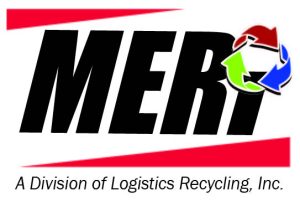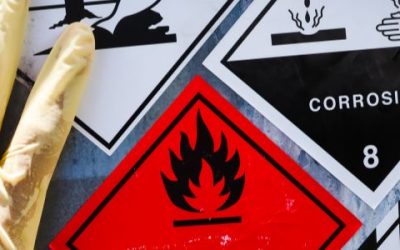There are three steps for how to handle hazardous waste containers in hospitals. To remember them, think of the word LID. It stands for locate, inspect and document. Those words will come in handy for what you must do when moving them throughout your facility to the main accumulation area.
This environmental service training video below highlights best practices when handling hazardous waste containers.
Environmental service and housekeeping staff will likely become familiar during their initial training of where to locate hazardous waste containers. They’ll also discover where to take them when they are full and where to find replacement containers.
Often times, the main accumulation room will be near the facility’s dock, where the full containers are ready for disposal.
Remember LID when Handling Hazardous Waste Containers
Let’s break down LID, the acronym for the steps of how hospital staff can LOCATE, INSPECT and DOCUMENT hazardous waste containers.
LOCATE
All hazardous containers should be in secure areas within the hospital, like nurses’ stations and locked medicine rooms.
A site map or collection log will help housekeeping or environmental service staff locate where hazardous waste containers are throughout the facility. The map and log should be part of a binder that has other key information, such as emergency contact information, formulary classification, policies and procedures as well as safety inspection information.
INSPECT
When doing regular weekly hazardous waste inspections, staff should don personal protection equipment (i.e. safety glasses, gloves) and have their collection log to check that each location has the correct number of hazardous containers. Staff should look to see if each hazardous container has a hazardous label on it. If it doesn’t, they should place one on it.
In addition, is the hazardous container lid secure? If not, close it. The only time the lid should be open is when materials are being placed inside of it.
Staff should also check if each container is in good working condition. Meaning, the containers will not have any cracks, or leaks. If there is either a crack or leak, follow hospital protocol to replace and clean up any spilled material.
If a hazardous waste container is full, it must go to the main accumulation room within three calendar days.
DOCUMENT
Hazardous waste containers must have a date on them of when they first entered the main accumulation area. The hazardous label must also be visible. Note that if an inspector was to ever show up, this is critical: All hazardous labels must be dated and be visible in the main accumulation area. Nothing can be stored in front of the containers. And, all of the container lids must be securely closed.
If staff are transferring materials from one container into a larger container, the date on the label must reflect the day when the first hazardous item was put into the container.
Finally, along the way, if staff notices something that shouldn’t be inside one of the containers, like a needle or other biohazard waste, they note this concern with their manager or document it via a paper or electronic record. This material would now be considered dual waste instead of hazardous waste. It must be labeled “DUAL WASTE” and must be processed by a company that is licensed to dispose of both hazardous and infectious waste.
By keeping these three steps in mind, together we can encourage safe handling of hazardous waste containers.
###



